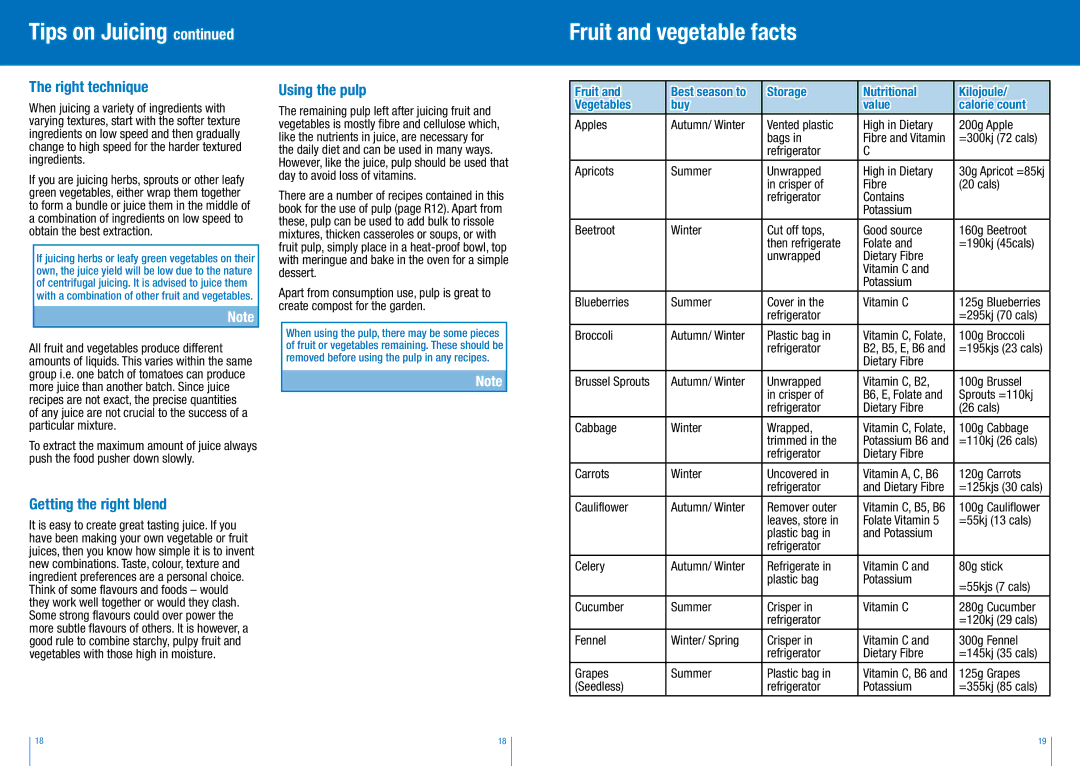BJE410 specifications
The Breville BJE410, also known as the Juice Fountain Plus, is a powerful juicer designed for those who value efficiency and quality in their juicing experience. With a sleek design and user-friendly features, the BJE410 delivers a perfect combination of style and performance.At the heart of the Breville BJE410 is a robust 900-watt motor that effortlessly extracts juice from a variety of fruits and vegetables. This high-powered motor allows the juicer to process tougher ingredients like carrots and beets, producing fresh and nutritious juice with minimal effort. The juicer’s extra-wide feed chute, measuring 3 inches, accommodates whole fruits and vegetables, eliminating the need for tedious pre-cutting. This feature not only saves time but also enhances overall convenience.
One of the standout technologies of the BJE410 is its patented juicing system, which incorporates a dual knife and mesh filter basket. This innovative design ensures maximum juice extraction, yielding more juice from the same amount of produce compared to traditional juicers. The stainless steel filter is durable and easy to clean, ensuring that users can maintain their juicer with minimal hassle.
The BJE410 also features a foam separator, which helps reduce froth in the juice, resulting in a smoother and more enjoyable drinking experience. This feature is particularly beneficial for those who prefer a juice with a finer texture. Furthermore, the juicer offers two speeds: low for softer fruits and high for harder vegetables, giving users the flexibility to create a wide variety of juices.
In terms of safety, the Breville BJE410 is equipped with a safety locking mechanism that ensures the lid is secured before operation, preventing accidents. The juicer’s built-in overload protection automatically shuts off the motor if it becomes overloaded, extending the lifespan of the appliance.
Cleanup is a breeze with the BJE410, as its removable parts are dishwasher safe. The appliance also has a compact design, making it easy to store when not in use. Overall, the Breville BJE410 Juice Fountain Plus combines powerful performance, innovative technology, and convenience, making it an excellent choice for anyone seeking a reliable juicing solution. With its impressive features and user-friendly design, this juicer stands out in the crowded market of kitchen appliances.

